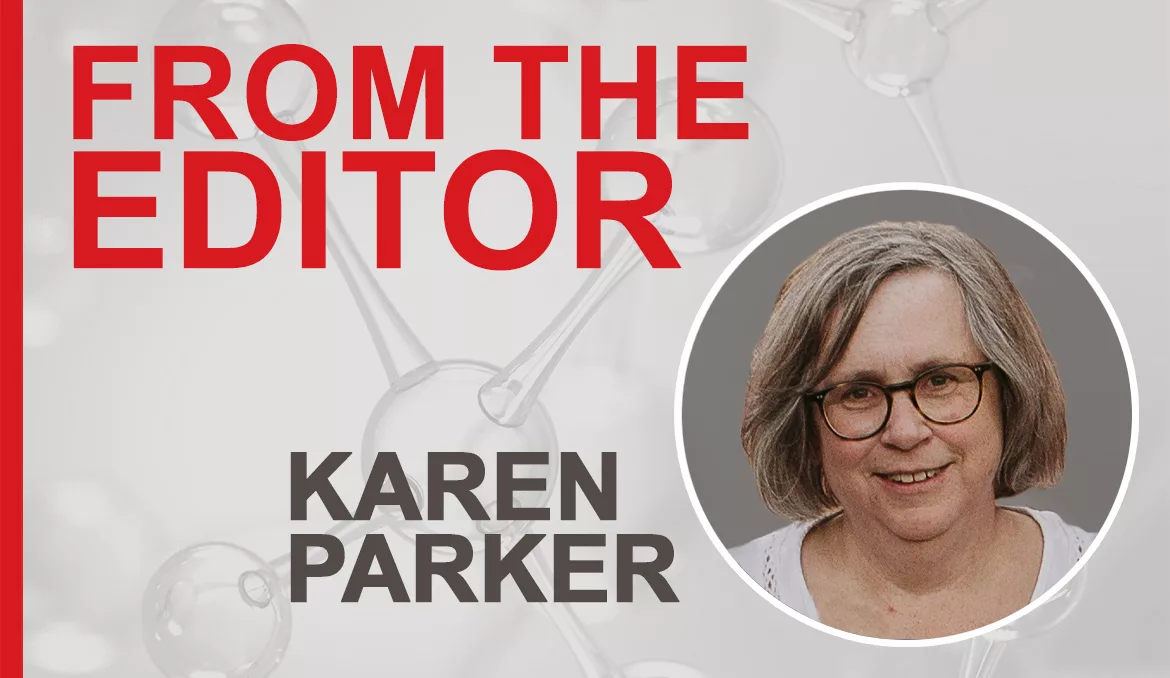From the Editor
Change Is Coming. Are You Ready?
As companies work to meet sustainability goals, cooperation, transparency, creative thinking all require a shift in how companies do business.

Fall is in the air in Southeast Michigan, and if you live, as I do, on a small lot in suburbia with way too many mature trees in your yard, fall imparts a sense of urgency. There is a lot to do before the snow comes. Apple picking, cider, donuts, these are all good things, but the driving emotion I usually feel in the fall is a bit of panic as the leaves come down and I know they all need to be neatly packed away in bags before there is a foot of snow on the ground and everything is more difficult.
Last week, I attended the ASC’s Sustainability Summit. If you have not made this part of your fall routine, I encourage you to attend next year. It is an excellent resource for companies working towards sustainability targets. Many thought leaders within the adhesives and sealants industry participate in the summit, and there is much to learn from their expertise.
A key impression I took away from this year’s summit is the magnitude of the work companies have ahead of them as they tackle sustainability initiatives and goals. Many companies within the chemical space have pledged to reduce their Scope 1 and Scope 2 emissions; now, they are looking to tackle the more daunting Scope 3 emissions. For a little background, Scope 1 emissions are “direct” emissions – those that a company creates by operating things it owns or controls. This could include running machinery, driving vehicles, heating buildings, etc. Scope 2 emissions are “indirect” emissions; they are emissions created from the energy a company buys. An initiative such as sourcing more renewable energy instead of fossil-fuel-based energy will help companies reduce Scope 2 emissions.
Scope 3 emissions are those emissions produced on both sides of your supply chain – by customers using your products and by companies supplying raw materials etc. used to manufacture your products. Scope 3 is usually the largest, by far, of the three. Deloitte estimates that Scope 3 can account for more than 70% of any business’ carbon footprint. Measuring Scope 3 involves complicated tracking across an entire business model. Companies looking to reduce Scope 3 emissions will need to assess the sustainability profile of suppliers and consider end-use impacts. To gather these data and reduce Scope 3 emissions, a level of transparency and cooperation between companies becomes very important. Reducing Scope 3 emissions also requires some out-of-the-box thinking and strategies, as companies reevaluate their place in the value chain. Circularity gains importance. What is the impact of your products down the value chain? How do you change end-of-use outcomes? Sourcing of raw materials adds another dimension as suppliers’ sustainability profiles take on more importance. What is the value of sourcing more bio-based products? How does supplier X source its feedstock? What plants are using renewable energy?
Cooperation, transparency, creative thinking all require a shift in how companies do business. They require leadership to imagine companies within a very broad context. This can mean a sea change in company culture, in business culture. In many ways, it will fundamentally change the way we do business around the world. That can feel daunting – a bit like anticipating bags and bags of fall leaves piling up in your yard. However, from what I have heard over the last year, this change is essential to the health of modern business. Companies that fail to tackle the problem will be forever behind, forever trying to get that last pile of leaves into the bag when their neighbor has everything ready for the snow.
The October issue of ASI features advances in chemistry for CASE applications, several articles about the use of adhesives in assembly, and information about a new tool developed by scientists at Georgia Tech that will help speed up polymer research and development. As always, please let me know what you think of these articles and what you hope to read in the future! Please email your comments to parkerk@bnpmedia.com.
Looking for a reprint of this article?
From high-res PDFs to custom plaques, order your copy today!




